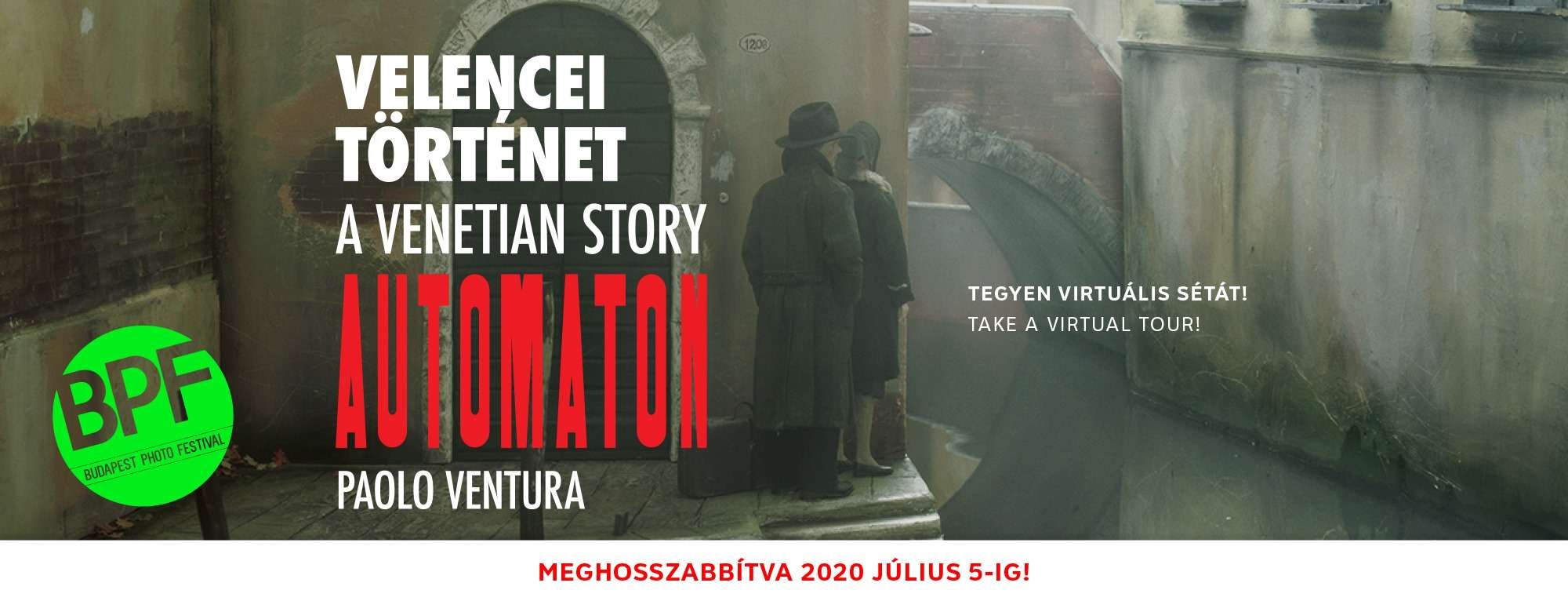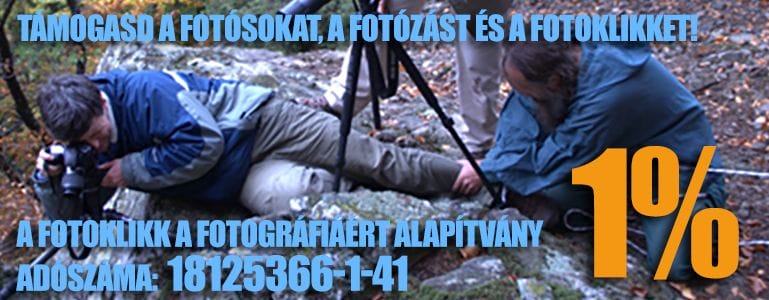
- This event has passed.
Paolo Ventura: Velencei történet / Automaton
2020, July 5 @ 10:00 - 18:00 CEST

Virtuális tárlatvezetések a kiállításról:
Juhász Anna: https://youtu.be/bAMLqMTlpao
Orvos-Tóth Noémi: https://youtu.be/548qZqwF3ac
Fodor Tamás: https://youtu.be/6aaIOR9JOA4
Süveg Márk SAIID: https://youtu.be/jGrnJ1qYVS4
A járványügyi veszélyhelyzetre való tekintettel a Műcsarnok március 17-től határozatlan időre bezárt. A kiállítás jelenleg online érhető el: http://mucsarnok.hu/panoramafoto/ventura
Magyarország legnagyobb fotográfiai eseménye, a BUDAPEST FOTÓFESZTIVÁL 2020. február 28-án negyedik alkalommal ünnepli a fotográfiát a MŰCSARNOKBAN induló rendezvénysorozatával. A Fesztivált ezúttal egy olyan kiállítás nyitja meg, amely a képzőművészet és a fotográfia, a képzelet és a valóság határán épült különleges képi világával varázsolja el a látogatókat.
Paolo Ventura Velencéje ismerős és mégis idegen. Az a benyomásunk, hogy talán csak a képzeletben létezett, pedig minden eleme annyira valóságos. Akárcsak maga a történelem, a közös múltunk. A különös, nyomasztó, félelmetes emlékekről gyakran szeretnénk azt hinni, csak rémálmokban léteznek. Hogy a múltat elszenvedők talán csak egy álomszerű bábszínház kicsiny figurái voltak, nem pedig hús-vér emberek.
Az alkotó, Ventura így vall projektjéről: „A történet minden egyes képe ebben a képzeletbeli Velencében készült, amelyet saját kezűleg építettem fel kicsiben. A sztori egyetlen, valóban megtörtént része a náci hadsereg és az olasz rendőrség bevonulása a gettóba 1943 decemberében.”
Az Automaton Velencében játszódik a második világháború alatt, amikor a német hadsereg bevonult Észak-Olaszországba, hogy megakadályozza korábbi szövetségese elpártolását. Egy olyan történet az alapja, amelyet Paolo Ventura még a gyermekkorában hallott mesekönyv szerző édesapjától. Főszereplője egy idős zsidó órás, aki 1943-ban, a náci megszállás és az olasz történelem talán legsötétebb korszakában igyekszik boldogulni a velencei gettóban. A történet ebben az elhagyatott, zárt és rettegéssel teli városrészben bontakozik ki. Az öregúr elhatározza, hogy felépíti az automatont (egy robotfiút), aki társaságot nyújt neki a sötét napokban, és családtagként él vele.
Az ember formájú automata gépezetek régóta megmozgatják a művészek képzeletét. Elég csak a népszerű balett, a Coppélia szintén órásmester hőse által teremtett leányra, vagy Offenbach népszerű operájának énekes robotjára gondolnunk. De az olasz mese életre kelt bábja, Pinokkió is eszünkbe juthat. A robotokat életre hívókat bár csodálták, de félték és gúnyolták is. A tágabb közösség gyakran kizárta őket. S az emberi robotok – legyenek csodálni vagy félni valók – arra is emlékeztettek, hogy az emberiség talán nem képes boldogulni a saját maga teremtette világban.
Ötszáz éve, 1516-ban jelölték ki a gettónak nevezett kis városrészt a zsidók lakhelyéül. Maga a gettó szó is velencei eredetű s itt játszódik Shakespeare Velencei kalmárja is. Az évszázadok alatt sokféle zsidó kultúra találkozott és hatott egymásra a zsúfolt és szűk utcákon meg az öt zsinagógában. A gettó falainak lerombolója a modern Európa szimbolikus hőse, Napóleon volt. A náci megszállás alatt – az addigra már megfogyatkozott közösségből – több száz zsidót hurcoltak el és közülük csak alig néhányan élték túl a trieszti és auschwitzi táborokat.
>>>>>>>>>>>
Hungary’s largest-scale photography show, the BUDAPEST PHOTO FESTIVAL 2020, celebrates photographic art for the fourth time with its series of events to run in the MŰCSARNOK from 28 February. This time the Festival opens with an exhibition where visitors can enter a magical pictorial world on the borderline of fine art and photography, fiction and reality.
Paolo Ventura’s Venice is at once familiar and unknown. The photographs create the impression as if it only existed in our fantasy, even though all its elements are so real. Akin to history, humanity’s shared past. We often wish to imagine that strange, oppressive and fearful memories only exist in nightmares. That those who suffered the past were only tiny figurines in an imaginary puppet theatre and not flesh-and-blood people.
This is how the creator, Ventura described his project: “Each photo was taken in an imaginary Venice, of which I built a model in miniature. The only part of the story that happened in reality was the Nazis and the Italian police entering the ghetto of Venice in December 1943.”
The Automaton takes place in Venice during WWII, at a time when the Nazis entered North Italy to stop their former allies from falling away. It was created based on a story that Ventura was told in his childhood by his father, an author of children’s books. The protagonist is an elderly Jewish watchmaker, who tried to survive in the ghetto of Venice in 1943, during what was perhaps the darkest period of Nazi occupation in Italian history. The story unfolds in the deserted, enclosed part of town filled with terror. The old Jew builds an automaton (a robot boy), who keeps him company in this time of darkness and lives with him as a family member.
Automatons have long captured artists’ imagination. Think of the dancing doll created by the watchmaker protagonist of the popular ballet, Coppélia, and the singing automaton of Offenbach’s famous opera, The Tales of Hoffmann. And of course there is Pinocchio, the puppet that is brought to life. Although people who created automatons were admired, they were at the same time feared and ridiculed. What is more, they were often excluded from the wider community. Automatons – whether admirable or fearsome – made people wonder if humanity would be able to survive in the world it created itself.
It was exactly in Venice more than five hundred years ago, in 1516, that a group of people were first forced to live in a ghetto because of their religion: the Campo di Ghetto Nuovo was founded by the Doge Loredan and its walls dismantled by the symbolic hero of modern Europe, Napoleon. The word ‘ghetto’ itself comes from Venice, the city where Shakespeare’s Merchant of Venice is also set. Over the many centuries various Jewish cultures intermingled and shaped one another in Venice’s crowded alleyways and its five synagogues. During the Nazi occupation hundreds of Jews were deported from the by then decimated Jewish community and only some of them survived the camps in Trieste and Auschwitz.
Kurátor/Curator: SZARKA Klára
https://www.facebook.com/events/721788181984907/



